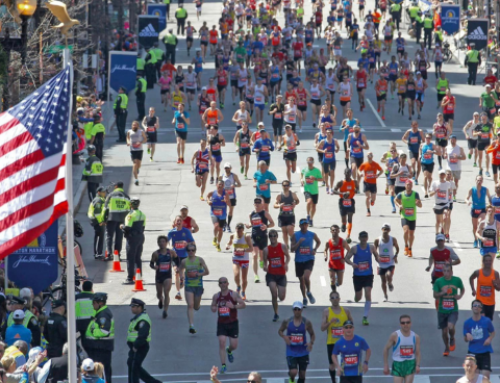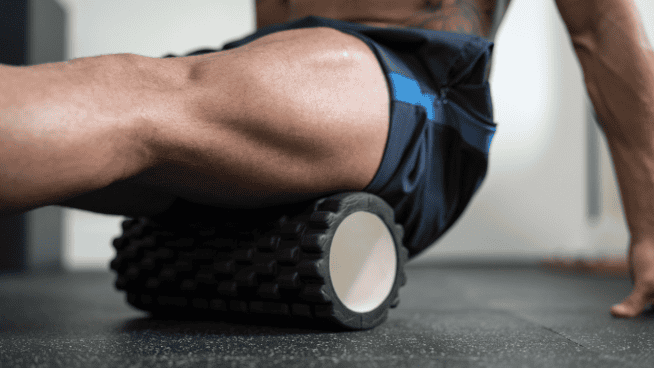![]()
Summer is just around the corner, and with it another triathlon season. You’ve spent the past couple of months putting in laps in the pool, spins on the bike, and miles on the road, all in preparation for the races you signed up for back in the cold, dark days of winter.
RELATED: 5 Tips to Avoid Rookie Mistakes at Your First Triathlon
Though you feel certain you are ready (or almost ready) for race day, one thing you probably haven’t given much thought to is the 4th leg of the race: the triathlon transition. Both the T1 (transition from swim to bike) and T2 (transition from bike to run) count in your precious competition time, so knowing how to effectively navigate through these changes can not only save time but also lessen race anxiety. Whether you’re new to triathlons or a veteran, here are some helpful tips and tricks to ensure you move through each transition with speed and ease.
1. Wear your socks to the race
Sounds crazy, but when you’re trying—in record time, no less—to put a dry sock on a foot that’s soaking wet and (perhaps) covered in sand, you’ll be happy you already formed it to your foot.
RELATED: Triathletes: Avoid These 5 Open Water Swimming Disasters
2. Practice removing your swim cap and goggles
This move may sound simple, and professionals make it look easy (not to mention ridiculously cool). However, most of us are not professionals, and the last thing you want to do is pull out a clump of hair, poke yourself in the eye or drop your goggles.
3. Practice removing your wetsuit
If you think pulling off a wetsuit is easy, you’ve got another think coming. While some bigger races (Ironman, Rev 3, etc.) have volunteer “wetsuit strippers,” most local races do not, so you’re on your own for this triathlon transition skill. You can find lots of videos online that will show you the most effective way to cleanly remove your wetsuit.
4. Practice putting socks/shoes over wet/sandy feet
Again, it sounds easy, but with your adrenaline pumping from your epic swim, you’ll be all thumbs unless you get this movement engrained into your “muscle memory.”
RELATED: 3 Things That Can Destroy Your Mental Toughness
5. Advanced skill: fasten your bike shoes to your pedals
For even more speed in your T1, you can pre-clip your bike shoes to your pedals. You might need to use a rubber band to secure one of your shoes in an upright position. Check out this video for directions on how to master this advanced skill.
6. Practice putting on/taking off your helmet
During the rush on race day, you’ll be glad you didn’t waste time trying to buckle and unbuckle your helmet, especially since you’re not permitted to mount your bike until it is firmly fixed to your head (see USAT rules and guidelines).
7. Pedal your bike at the same cadence as your run pace
On the last quarter mile or so of the bike portion of the race, begin to pedal at the same turnover rate/cadence as the beginning pace of your run. This will help to alleviate some of that “wobbly leg” feeling every racer experiences in T2.
8. As always, review the USAT guidelines to ensure proper safety precautions and compliance with the rules
Reviewing all of the rules is a must for triathlon newbies, but even seasoned athletes should take some time to refresh the ol’ memory bank on race-day do’s and don’ts.
[cf]skyword_tracking_tag[/cf]RECOMMENDED FOR YOU
![]()
Summer is just around the corner, and with it another triathlon season. You’ve spent the past couple of months putting in laps in the pool, spins on the bike, and miles on the road, all in preparation for the races you signed up for back in the cold, dark days of winter.
RELATED: 5 Tips to Avoid Rookie Mistakes at Your First Triathlon
Though you feel certain you are ready (or almost ready) for race day, one thing you probably haven’t given much thought to is the 4th leg of the race: the triathlon transition. Both the T1 (transition from swim to bike) and T2 (transition from bike to run) count in your precious competition time, so knowing how to effectively navigate through these changes can not only save time but also lessen race anxiety. Whether you’re new to triathlons or a veteran, here are some helpful tips and tricks to ensure you move through each transition with speed and ease.
1. Wear your socks to the race
Sounds crazy, but when you’re trying—in record time, no less—to put a dry sock on a foot that’s soaking wet and (perhaps) covered in sand, you’ll be happy you already formed it to your foot.
RELATED: Triathletes: Avoid These 5 Open Water Swimming Disasters
2. Practice removing your swim cap and goggles
This move may sound simple, and professionals make it look easy (not to mention ridiculously cool). However, most of us are not professionals, and the last thing you want to do is pull out a clump of hair, poke yourself in the eye or drop your goggles.
3. Practice removing your wetsuit
If you think pulling off a wetsuit is easy, you’ve got another think coming. While some bigger races (Ironman, Rev 3, etc.) have volunteer “wetsuit strippers,” most local races do not, so you’re on your own for this triathlon transition skill. You can find lots of videos online that will show you the most effective way to cleanly remove your wetsuit.
4. Practice putting socks/shoes over wet/sandy feet
Again, it sounds easy, but with your adrenaline pumping from your epic swim, you’ll be all thumbs unless you get this movement engrained into your “muscle memory.”
RELATED: 3 Things That Can Destroy Your Mental Toughness
5. Advanced skill: fasten your bike shoes to your pedals
For even more speed in your T1, you can pre-clip your bike shoes to your pedals. You might need to use a rubber band to secure one of your shoes in an upright position. Check out this video for directions on how to master this advanced skill.
6. Practice putting on/taking off your helmet
During the rush on race day, you’ll be glad you didn’t waste time trying to buckle and unbuckle your helmet, especially since you’re not permitted to mount your bike until it is firmly fixed to your head (see USAT rules and guidelines).
7. Pedal your bike at the same cadence as your run pace
On the last quarter mile or so of the bike portion of the race, begin to pedal at the same turnover rate/cadence as the beginning pace of your run. This will help to alleviate some of that “wobbly leg” feeling every racer experiences in T2.
8. As always, review the USAT guidelines to ensure proper safety precautions and compliance with the rules
Reviewing all of the rules is a must for triathlon newbies, but even seasoned athletes should take some time to refresh the ol’ memory bank on race-day do’s and don’ts.
[cf]skyword_tracking_tag[/cf]









